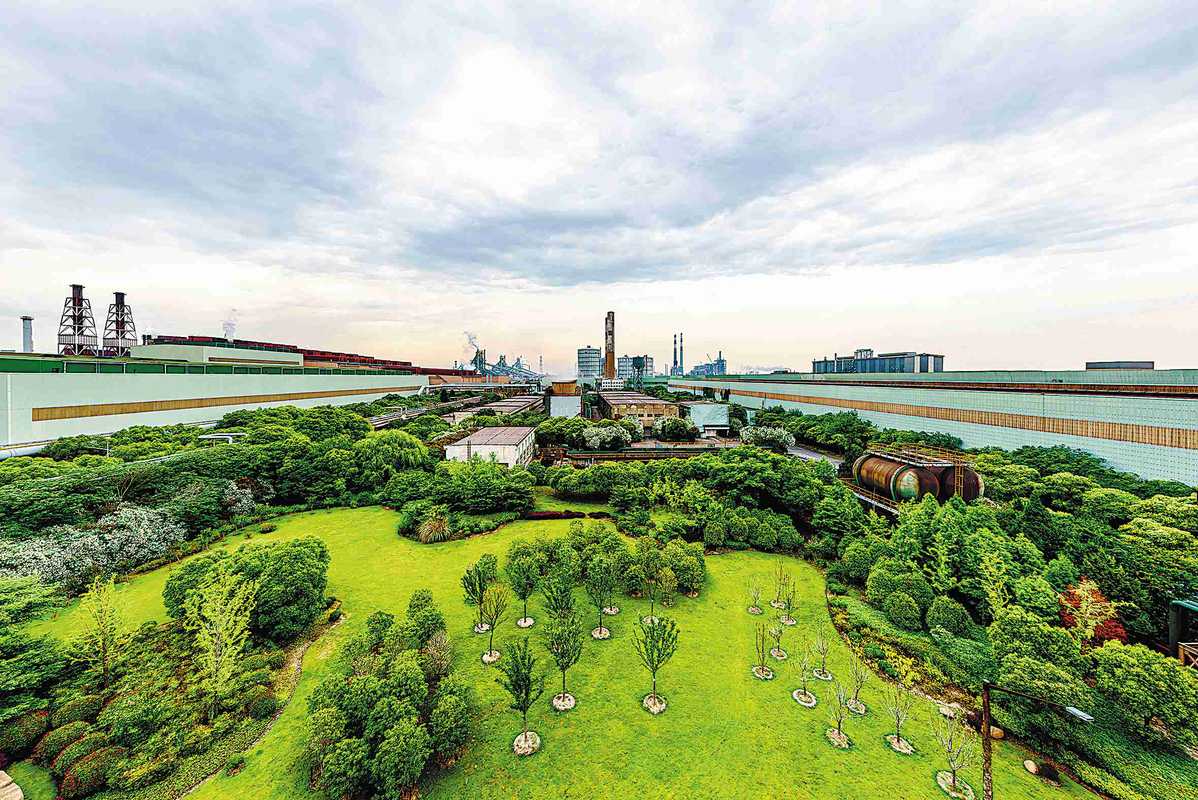Steel group leads way as industry recasts itself


China Baowu aims to hit dual-carbon goals with world's most advanced low-carbon metallurgy production projects
Editor's note: China aims to peak its carbon dioxide emissions before 2030 and achieve carbon neutrality before 2060, major goals in a national green transition drive. This series looks at efforts in various sectors to meet the goals.
For Tian Baoshan, life seems like a circle.
After entering the steel industry 23 years ago, he returned to work at a blast furnace. Now, however, the onetime furnace man is leading the exploration of the world's most advanced low-carbon steel manufacturing process.
Tian, 44, is head of the first hydrogen-enriched carbon recycling blast furnace production project.
When a technological upgrade of the 430-cubic-meter blast furnace is completed, the carbon consumption of the furnace will be reduced by nearly one-third.
The program, launched in July last year, is about to complete its third and final stage and is expected to be ready for production by the end of August, according to Xu Xiaobing, chief representative of the carbon neutrality division at China Baowu Steel Group's Xinjiang Bayi Iron & Steel in the Xinjiang Uygur autonomous region.
The average carbon intensity of the blast furnace's process is 1 metric ton for every ton of iron produced, and Baowu aims to reduce that by 30 percent with the new facility.
Hydrogen-enriched carbon recycling blast furnaces are still in the experimental stage in Europe and the United States, but are smaller than 10 cubic meters.
Xu said that Baowu's demonstration project is the world's first long-process low-carbon metallurgy production project.
Long-process steel production is a drawn-out process that begins with iron ore. Short-process steelmaking begins with steel scrap.
"The success of the project will hopefully pave the way for China's iron and steel metallurgy industry to realize low-carbon transformation in the coming 15 to 20 years," said Xu, who added that the long process currently accounts for the lion's share of the nation's metallurgy sector.
Meanwhile, a demonstration project for short-process steel production in Xinjiang was launched at the end of last year. Construction of the production line, which is expected to have an annual capacity of 500,000 tons, will begin once the approval process is completed.
According to Xu, it is hoped that the short process will lower carbon intensity to 0.05 ton for every ton of steel produced.
Both projects are part of China Baowu's efforts to reach its low-carbon goal of peaking carbon emissions by 2023. The group has vowed to reduce its average carbon intensity by 30 percent, compared with 2020, to 1.3 tons per ton of steel produced by 2035, before achieving carbon neutrality by 2050.
To get there, Baowu plans to adopt a variety of measures ranging from extreme energy efficiency and hydrogen-enriched carbon recycling blast furnaces to recycling of metallurgical resources and carbon capture and utilization, according to China Baowu's road map for low-carbon metallurgical technology.
Chen Derong, chairman of China Baowu Group, said: "China is committed to peaking carbon emissions before 2030 and achieving carbon neutrality before 2060. Being the world's largest steel company, China Baowu should take the responsibility to lead carbon neutrality."
The ferrous metallurgical industry contributes between 15 and 17 percent of China's carbon emissions, so the steel industry will play a key role in reaching low-carbon development in China's decarbonization roadmap.
China Baowu overtook Luxembourg-based ArcelorMittal to become the world's top steel producer in 2020, with an annual crude steel output of 115 million tons.
In order to boost the global steel industry's low-carbon transformation, the Global Low-Carbon Metallurgical Innovation Alliance was established in Shanghai in November.




































